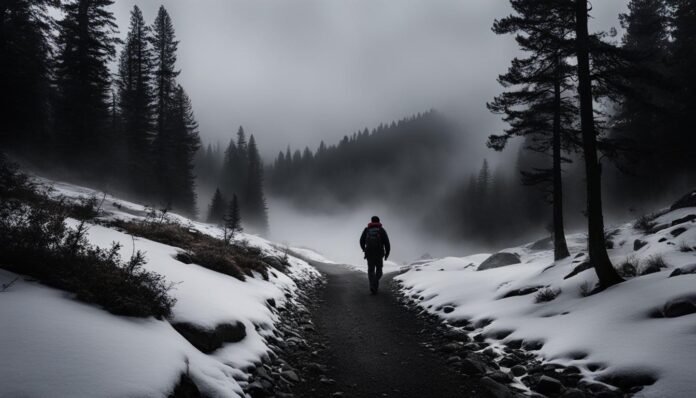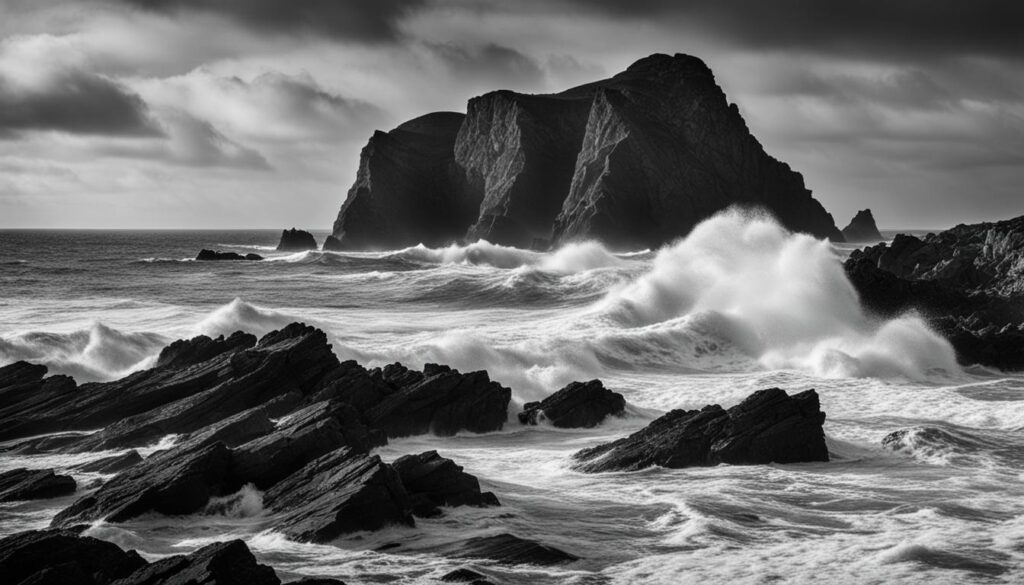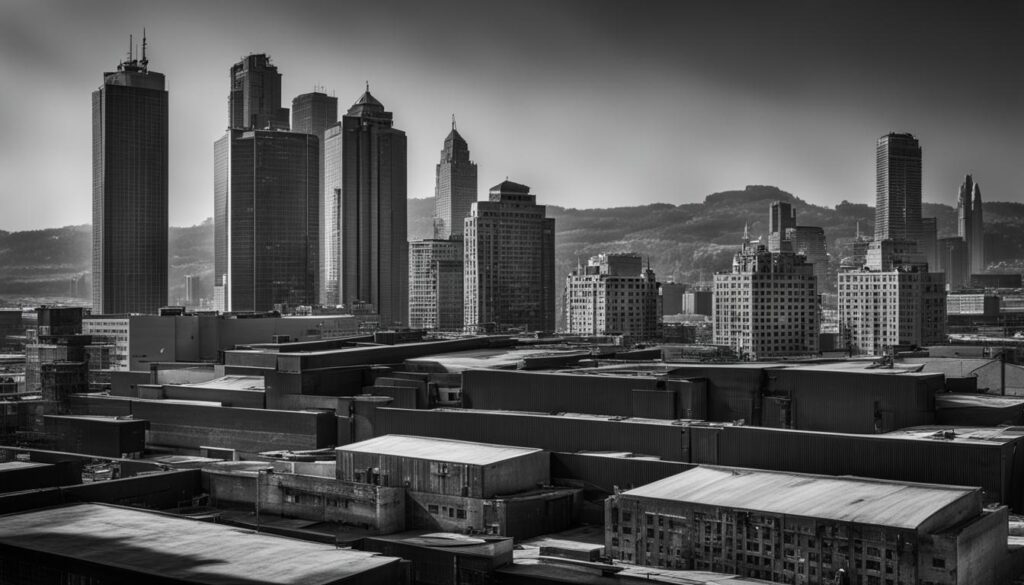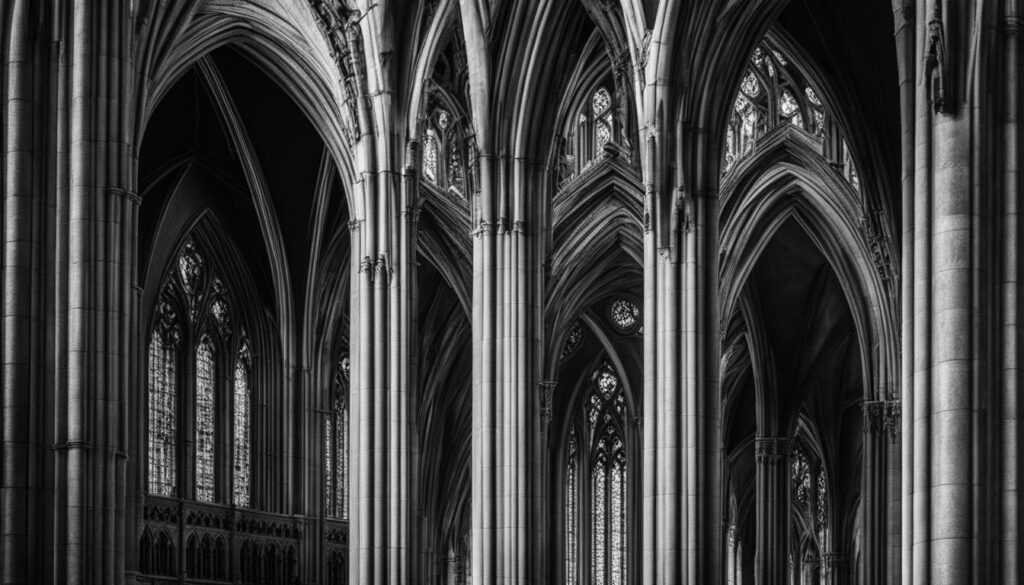Travel photography is all about capturing the spirit of a place and immersing yourself in its unique culture. While many photographers lean towards color images, black and white travel photography can bring a whole new level of depth and emotion to your travel photos. With monochrome lenses, you can capture the essence of moments and places in a timeless manner, highlighting texture, contrast, and composition in stunning detail.
If you want to take your travel photography to the next level, black and white travel photography may be just what you need. In this article, we will explore the artistry and techniques behind black and white travel photography, providing practical tips on everything from capturing landscapes and cityscapes to telling stories through monochrome images. So, whether you’re a seasoned pro or just starting, let’s embark on a timeless journey of black and white travel photography.
The Artistry of Monochrome Travel Photography
Monochrome travel photography is an art form that involves capturing the essence of a place or moment through the lens of a camera. By removing the distraction of color, the focus shifts to the shapes, lines, textures, and contrast that make up the composition of the image. The resulting images can evoke powerful emotions and tell stories in a way that’s not possible with color photography.
One of the unique aspects of monochrome travel photography is the ability to play with light and shadow to create a sense of drama and depth. By using techniques such as high contrast and harsh lighting, you can create images that are both striking and haunting. Alternatively, by using soft light and shadows, you can create images that are gentle and contemplative.
Another advantage of monochrome travel photography is the way it can highlight the details and intricacies of a subject. By removing the distraction of color, the viewer can focus on the small details that may have otherwise gone unnoticed. This is especially true for architecture and landscapes, where shapes and textures are the main focus.
To create stunning monochrome images, you’ll need to pay attention to composition, contrast, and other technical details. Understanding the basics of exposure, contrast, and lighting will go a long way in creating impactful images. Additionally, investing in good equipment such as a monochrome lens or filter will help to enhance the quality of your photographs.
Ultimately, the artistry of monochrome travel photography lies in its ability to transport the viewer to a different time and place. Through intentional composition, thoughtful use of light and shadow, and a focus on the details, the resulting images can be both timeless and powerful.
Capturing Black and White Landscapes
Black and white photography has a way of capturing the essence of a place in a timeless and elegant manner, and landscapes are no exception. By removing color, it allows for a heightened focus on the interplay of light and shadow, textures, and contrast, resulting in striking and emotive images.
When capturing black and white landscapes, there are several considerations to keep in mind to ensure a stunning result:
- Look for natural elements such as mountains, oceans, and forests that have strong lines, shapes, and contrast.
- Pay attention to the direction and quality of light. Side lighting can emphasize textures and patterns, while backlighting can create dramatic silhouettes and contrast.
- Compose your shot carefully, keeping in mind the rule of thirds, leading lines, and balance.
- Experiment with exposure to achieve the desired level of contrast and tonality.
Remember that black and white landscapes can be just as emotionally evocative as color ones. They convey a sense of timelessness and nostalgia, and can highlight the natural beauty of the world around us.
“Black and white are the colors of photography. To me, they symbolize the alternatives of hope and despair to which mankind is forever subjected.” –Robert Frank
Immortalizing Cityscapes in Black and White
Cityscapes provide a wealth of opportunities for black and white photography. Urban architecture, street life, and iconic landmarks fascinate photographers with their charisma and uniqueness. Capturing this fascination requires an understanding of the city’s spirit and the ability to translate it through monochrome lenses.
Focus on Architectural Beauty
The urban landscape is full of architectural treasures that look even more striking in black and white. Monochrome photography brings out the texture, patterns, and symmetry of buildings, highlighting their unique character. When snapping shots of cityscapes, pay attention to the angles and shapes of the buildings, and look for contrasting light and shadow to create dynamic compositions.
Embrace the Urban Rhythm
City life moves at a fast pace, but that doesn’t mean you can’t capture it in black and white. In fact, the lack of color enhances the graphic quality of street scenes, revealing the rhythm and energy of city life. Look for moments of human interaction and movement, capturing people in motion, or waiting for transport. As a result, through black and white cityscapes, you can communicate the mood of the city and its inhabitants.
Highlight Iconic Landmarks
Many cities are defined by their iconic landmarks that signify a sense of place. Whether it’s the Eiffel Tower, the Empire State Building, or the Burj Khalifa, these landmarks can add drama and narrative to your black and white cityscape photography. However, avoid clichéd shots by seeking out unique angles to capture the landmark within its surroundings. By doing so, you can evoke a sense of place and reignite memories of the destination.
Unveiling the Essence of Street Photography in Black and White
When it comes to capturing the essence of a city, street photography is a must. The vibrant energy and chaotic beauty of urban life can be revealed through the lens of a skilled photographer. And when it comes to street photography, black and white is a classic and powerful choice.
The raw emotions, candid moments, and vivid storytelling that make up the heartbeat of a city are easily unveiled with black and white street photography. The absence of color allows for a deeper focus on important elements like composition, contrast, and light and shadow.
Shooting street photography with black and white film or post-processing digital images to black and white can create a timeless feel and evoke a sense of nostalgia. It’s a perfect way to capture the charm and character of a city that might be lost in a sea of modernity.
Essential Techniques for Black and White Street Photography
To capture the raw and candid moments of street photography, you must blend in and be one with your surroundings. Here are some essential techniques to help you shoot powerful black and white street photographs:
- Be patient: Wait for the right moment. Don’t hesitate to shoot, but don’t rush it either.
- Use high ISO: Street scenes often have low light. High ISO can help you achieve the right exposure.
- Choose the right light: The right light can play a major role in black and white photography. Look for natural light sources like windows, doorways, and streetlights.
- Experiment with composition: Play around with different angles, perspectives, and compositions. Use leading lines to draw attention to your subject.
- Stay aware: Keep an eye on the changing scenery and remain alert to capture the best candid moments.
“Street photography is about observing. It’s about finding something interesting in an ordinary place… I’ve found it has little to do with the things you see and everything to do with the way you see them.” – Elliott Erwitt
Architectural Marvels in Monochrome
Black and white architecture photography is a captivating way to showcase the intricate details, dramatic perspectives, and unique angles of architectural wonders. Capturing the essence of these structures requires expertise and an eye for detail. Below are some techniques to help you elevate your black and white photography to the next level:
1. Emphasize Contrast
In black and white photography, the interplay of light and shadow creates the contrast that provides a sense of depth and texture to the image. Shooting during times of the day where the light is softer, like early mornings or late afternoons, can create a softer yet dramatic contrast, while shooting in the midday sun can create a higher contrast image.
2. Use Wide-Angle Lenses
Wide-angle lenses are perfect for capturing architecture, pulling in the viewer with expansive views and interesting perspectives. They also add an element of distortion that can make buildings look larger-than-life, providing a unique twist to your images.
3. Highlight Unique Features
When photographing buildings, focus on the unique features that make them stand out. This could be anything from intricate carvings, ornate designs, to interesting angles of a particular feature. Emphasizing these unique details can make your photos stand out and provide a fresh perspective to your viewers.
“Architecture is the learned game, correct and magnificent, of forms assembled in the light.” – Le Corbusier
The above philosophy inspires photographers to view buildings as more than structures but as living entities that possess unique personalities. Capturing these personalities in monochrome can evoke emotions that color photography may not be able to.
Connecting with Nature Through Black and White Photography
There’s nothing quite like being in nature. From stunning mountain vistas to tranquil forests and peaceful beaches, nature has a unique way of captivating our senses. Black and white nature photography is a way to capture the essence of these places in a way that transcends color.
One of the benefits of black and white nature photography is the ability to highlight textures. When color is removed from the equation, textures become more pronounced, drawing the viewer into the image. Additionally, black and white photography can emphasize the delicate balance of light and shadow found in nature, creating a sense of tranquility and serenity.
When capturing black and white nature photography, it’s essential to pay attention to composition. Look for lines, shapes, and patterns in the natural world that can be used to create a visually striking image. Experiment with different angles and perspectives to create a unique viewpoint.
Post-processing is also an important part of black and white nature photography. Adjusting contrast and exposure can help bring out the texture and details in the image. In some cases, adding a black and white filter can enhance the final result.
Benefits of Black and White Nature Photography
| Benefits | Explanation |
|---|---|
| Emphasizes textures | Black and white photography can highlight the texture and details found in nature. |
| Creates a sense of tranquility | The delicate balance of light and shadow in black and white nature photography can evoke a sense of peace and serenity. |
| Provides a unique perspective | Black and white nature photography offers a timeless and artistic perspective of the natural world. |
Black and white nature photography has a timeless beauty that can evoke strong emotions in the viewer. By focusing on texture, light, and composition, you can create stunning images that showcase the wonder and majesty of the natural world.
Essential Equipment and Settings for Black and White Travel Photography
Black and white travel photography is an enriching and creative way to capture the essence of your travel experience. However, it requires a different approach to color photography. In this section, we provide practical advice on the essential equipment and camera settings to enhance your monochrome images.
Camera Equipment
When shooting black and white travel photography, the type of camera equipment you use is crucial to achieving the desired effect. Here are some tips to help you choose:
| Equipment | Benefits |
|---|---|
| Camera with strong low-light performance | Allows for capturing stark contrasts and dramatic shadows |
| Prime lenses with fixed focal lengths | Provide sharper images with better depth of field |
| Neutral density filters | Reduce light entering the lens, allowing for longer exposures and blur effects |
Camera Settings and Shooting Tips
Once you have your equipment in hand, it’s time to dial in your camera settings and shooting techniques. Here are some key points to consider:
- Shoot in RAW format to have greater control over the post-processing phase and maximize image quality.
- Use a low ISO setting to minimize digital noise in your images.
- Select a monochrome or black and white mode in your camera’s settings to capture images in real-time without distracting colors.
- Play with different shutter speeds and apertures to create vivid contrasts and blur effects.
- Experiment with angles, composition, and framing to add visual interest to your photos.
- Use natural light and shadows to add texture and dimension to your images.
Remember, every camera has its unique features and capabilities, so play around with your camera’s settings to find your preferred style and technique for black and white travel photography.
Composition Techniques for Striking Black and White Travel Photos
Black and white travel photography is not just about shooting in monochrome mode. Composition plays a crucial role in creating visually impactful images that capture the essence of a place or a moment. In this section, we will explore some composition techniques that can help you create stunning B&W travel photos.
The Rule of Thirds
The Rule of Thirds is a fundamental principle in photography. It involves dividing an image into thirds, both horizontally and vertically, and placing the main subject or point of interest at one of the intersections of these lines. This technique creates a sense of balance and visual interest, making it ideal for composing striking B&W travel photos.
Leading Lines
Leading lines are lines in an image that direct the viewer’s eyes towards the main subject or point of interest. They can be natural lines such as roads or rivers, or man-made lines such as railings or walls. Including leading lines in your B&W travel photos can add depth and visual interest, making them more striking and memorable.
Symmetry
Symmetrical compositions are pleasing to the eye and can create a sense of harmony and balance in an image. You can achieve symmetry by placing the main subject in the center of the frame or by using reflections. Symmetrical B&W travel photos can be particularly effective at capturing the architectural beauty of buildings, bridges, or other man-made structures.
The Power of Negative Space
Negative space is the empty space around the main subject in an image. It can be used to create a sense of contrast and highlight the subject’s importance. Including negative space in your B&W travel photos can add depth and visual interest, making your photos more striking and memorable.
“Great composition is about arranging elements in a way that is pleasing to the eye and creates a sense of balance and visual interest.” – John Smith, professional photographer
By applying these composition techniques, you can create stunning B&W travel photos that stand out and capture the essence of your travel experiences. Experiment with different compositions and see how they can add depth and visual interest to your images.
Telling Stories Through Black and White Travel Photography
Travel photography is not just about capturing beautiful scenery or iconic landmarks. It’s about telling a story and sharing your unique experiences with the world. Black and white travel photography can be a powerful tool to create compelling narratives that evoke emotions and inspire awe.
To tell a story through your black and white travel photography, it’s essential to think beyond single images and focus on creating a series of photos that take the viewer on a journey. Consider the destination’s culture, people, and history, and strive to capture the essence of a place through your lens.
One way to create a narrative with your black and white travel photography is to use the technique of juxtaposition. This involves placing two contrasting elements side by side in your photo, creating a sense of tension, and encouraging the viewer to make a connection between them. For example, you can capture a serene natural landscape and juxtapose it with a bustling city scene to highlight the contrast between urban and rural areas.
Another storytelling technique is to focus on capturing candid moments and emotions. Rather than just taking posed tourist shots, try to capture genuine human interactions, expressions, and gestures that convey a sense of the local culture and way of life. Experiment with different angles, compositions, and lighting to create a mood that reflects the atmosphere of the place you’re photographing.
Black and white travel photography can also convey a sense of timelessness and nostalgia. By stripping away the distraction of color, you can create images that transport the viewer back in time and evoke a sense of nostalgia for a bygone era. This can be particularly effective when photographing historical sites, villages, and architecture.
Ultimately, the key to telling a great story through your black and white travel photography is to be creative, curious, and authentic. Explore new destinations with an open heart and mind, and let your camera capture the magic of the moment. With the right techniques and storytelling mindset, you can create evocative, artistic images that transcend time and trends.
Conclusion
Congratulations on completing this journey into the world of black and white travel photography. By now, you should have a deeper understanding of the artistry, techniques, and equipment needed to create stunning monochrome images that capture the essence of your travels.
Remember, black and white travel photography is more than just removing color from your pictures. It’s about telling stories, conveying emotions, and looking at the world from a fresh perspective. With the right skills and vision, your black and white images can leave a lasting impression on viewers, transcending time and trends.
So, go out there and explore the world with your monochrome lenses. Experiment with composition, lighting, and subject matter. And most importantly, have fun and let your creativity shine through your black and white travel photography.
Thanks for reading, and we hope this guide has helped you on your journey towards becoming a master of black and white travel photography.

















































